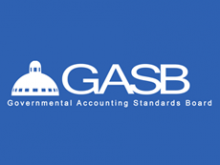Accounting
GASB Sets Single Approach for Lease Financial Reporting
The Governmental Accounting Standards Board (GASB) has issued guidance that establishes a single approach to accounting for and reporting leases by state and local governments. This single approach is based on the principle that leases are ...
Jul. 16, 2017

The Governmental Accounting Standards Board (GASB) has issued guidance that establishes a single approach to accounting for and reporting leases by state and local governments. This single approach is based on the principle that leases are financings of the right to use an underlying asset.
GASB Statement No. 87, Leases, provides guidance for lease contracts for nonfinancial assets—including vehicles, heavy equipment, and buildings—but excludes nonexchange transactions, including donated assets, and leases of intangible assets (such as patents and software licenses).
Under the new Statement, a lessee government is required to recognize (1) a lease liability and (2) an intangible asset representing the lessee’s right to use the leased asset. A lessor government is required to recognize (1) a lease receivable and (2) a deferred inflow of resources. A lessor will continue to report the leased asset in its financial statements.
A lessee also will report the following in its financial statements:
- Amortization expense for using the lease asset (similar to depreciation) over the shorter of the term of the lease or the useful life of the underlying asset
- Interest expense on the lease liability
- Note disclosures about the lease, including a general description of the leasing arrangement, the amount of lease assets recognized, and a schedule of future lease payments to be made.
A lessor also will report the following in its financial statements:
- Lease revenue, systematically recognized over the term of the lease, corresponding with the reduction of the deferred inflow
- Interest revenue on the receivable
- Note disclosures about the lease, including a general description of the leasing arrangement and the total amount of inflows of resources recognized from leases.
“The Board’s new leasing guidance better aligns the accounting and financial reporting of these arrangements with their economic substance,” said GASB Chairman David A. Vaudt. “The new single model for reporting governmental leasing agreements is designed to result in greater transparency and usefulness for financial statement users. It also is meant to reduce complexity in application for preparers and auditors of governmental financial statements.”
Limited exceptions to the single-approach guidance are provided for:
- Short-term leases, defined as lasting a maximum of 12 months at inception, including any options to extend
- Financed purchases
- Leases of assets that are investments
- Certain regulated leases, such as between municipal airports and air carriers.
Other issues addressed in the Statement include:
- Accounting for lease terminations and modifications
- Sale-leaseback transactions
- Nonlease components embedded in lease contracts (such as service agreements)
- Leases with related parties.
The full text of Statement 87 and a high-level overview featured in the current issue of the GASB Outlook are available on the GASB website, www.gasb.org.
Considerations Related to Costs and Benefits
One of the principles guiding the GASB’s setting of standards is that the costs incurred through the application of its standards, compared with possible alternatives, are justified when compared to the expected overall public benefit. Although the costs of implementing the changes required by this Statement may be significant, the Board believes that the expected benefits that will result from the information provided through implementation of the Statement, both initially and on an ongoing basis, are significant.
The exceptions identified above, as well as exclusions of supply contracts and leases of inventory, will reduce the cost of implementation. The Statement also includes cost-reducing provisions regarding reassessment of the lease term, allowing governments to report multiple-component contracts as a single lease unit when a best estimate of individual components is not practicable, and not requiring lessors to derecognize underlying assets, among other provisions.
